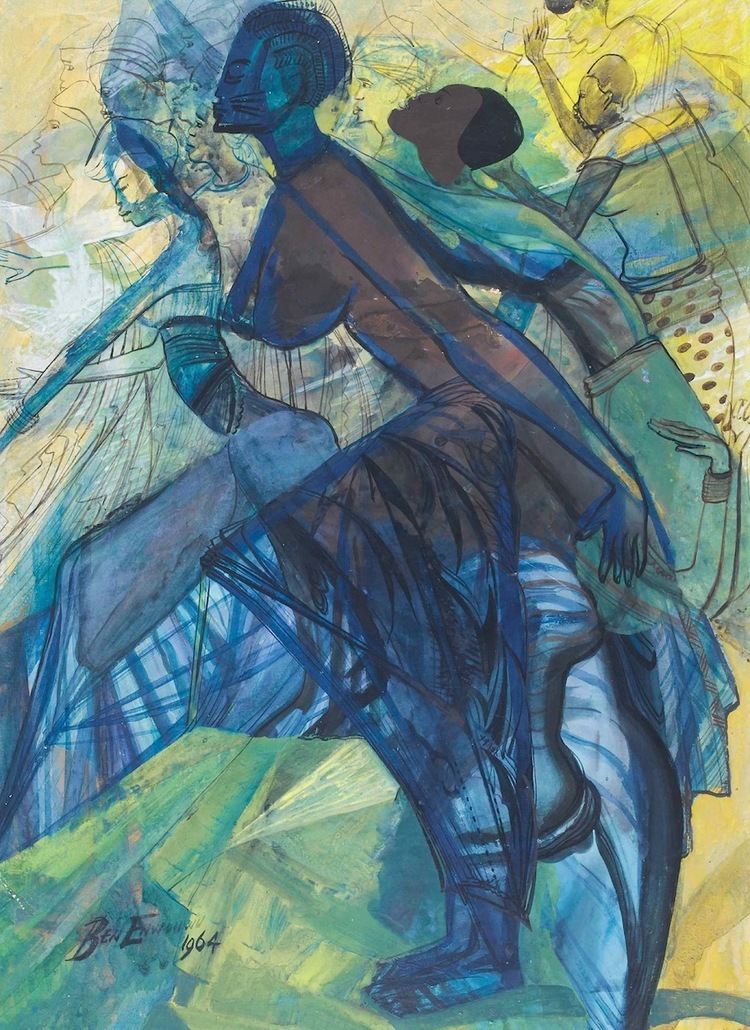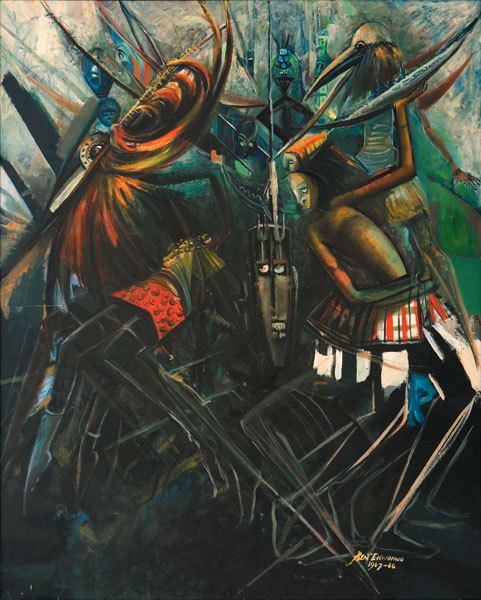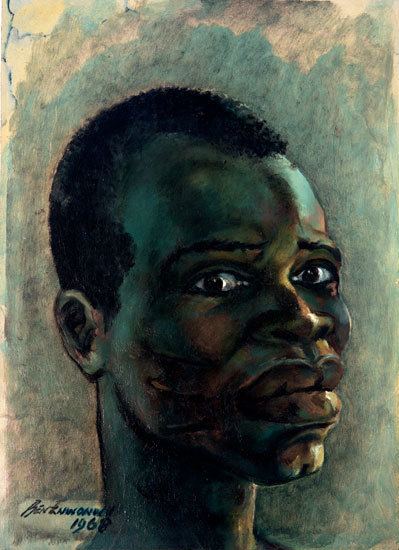Nationality Nigerian Movement Modern African Art | Name Ben Enwonwu Known for Painting, Sculpture | |
 | ||
Awards Shell Petroleum Scholarship, National Merit Award, Commonwealth Certificate in London, Officer of the National Order of the Republic in Senegal, & National Order of Merit in Nigeria Artwork Cotton trees, Felling trees Similar Jimoh Buraimoh, Bruce Onobrakpeya, Twins Seven Seven | ||
Ben enwonwu capercaillie inexile mp4
Odinigwe Benedict Chukwukadibia Enwonwu MBE (14 July 1917 – 5 February 1994), better known as Ben Enwonwu, was a Nigerian painter and sculptor. He is one of the pioneers whose career opened the way for the postcolonial proliferation and increased visibility of modern African art, and was the first Nigerian contemporary artist to win international acclaim. His work has been exhibited around the world. The Enwonwu crater on the planet Mercury is named in his honour.
Contents
- Ben enwonwu capercaillie inexile mp4
- Early life
- Education
- Career
- Impact on the modern art world
- Notable works
- Awards
- References

Early life

Ben Enwonwu was born a twin on 14 July 1921 into the noble family of Umueze-Aroli in Onitsha, Nigeria. His father, Omenka Odigwe Emeka Enwonwu, was a technician who worked with the Royal Niger Company; he was also a member of the Onitsha Council of Chiefs and a traditional sculptor of repute. He was a reputable traditional sculptor who created office stools and decorated doors with religious images. His mother, Ilom was a successful cloth merchant.
Education

In 1934, Enwonwu studied Fine Arts under Kenneth C. Murray at Government Colleges, Ibadan and Umuahia, 1934–37. Murray was an education officer in charge of art education in the colonial civil service and later director of antiquities. Enwonwu attended Goldsmith College, London, in 1944, then continued his studies at Ruskin College, Oxford, England, from 1944 to 1946, at Ashmolean College and Slade School of Fine Arts, Oxford, 1946–48, graduating with first-class honours. During their time together, Enwonwu became Murray’s assistant and was recognized as one of the most gifted and technically proficient student of the “Murray Group”. In 1937, Murray exhibited Enwonwu’s work at the Zwemmer Gallery in London The period of study under Murray marked the beginning of Enwonwu’s formal education in art. He took postgraduate courses in anthropology and ethnography at the University of California and Louisiana State University, Baton Rouge.

Enwonwu graduated from the Slade Art School with a diploma in Fine Art and earned honors in Sculpture. One year later, he received his Master’s of Art degree in Social Anthropology at the University College in London. Nkiru Nzegwu states that the racist atmosphere he encountered during his stay in England sparked his interest in entering this program. Anthropology offered a space for the scientific study of the races, their physical and mental characteristics, customs, and social relationships. In 1969, he received his Doctorate Degree from Ahmadu Bello.
Career
After working with Murray for many years, he was hired as a teacher at the Government College of Umuahia. According to Sylvester Ogbechie, author of Ben Enwonwu: The Making of an African Modernist, Murray was displeased with the university’s choice to provide Enwonwu with the same salary as the other seasoned teachers. This created a rift between mentor and mentee. Eventually Murray left Government College and Enwonwu replaced him as art teacher. He continued his work as an art teacher in other various schools, including mission school in Calabar Province (1940–41), and Edo College, Benin City (1941–43). He was art adviser to the Nigerian government from 1948. During the years following 1950, he toured and lectured in the United States, and executed many commissions as a freelance artist. From 1949 to 1954, Enwonwu held many art exhibitions within London, Lagos, Milan, New York City, Washington D.C., and Boston. During her visit to Nigeria in 1956, Queen Elizabeth II commissioned and sat for a portrait sculpture by the artist. During the Royal Society of British Artists exhibition in London of 1957, he unveiled the bronze sculpture. In 1959, Enwonwu was appointed Supervisor in the Information Service Department office in Nigeria. He was a fellow of Lagos University, Lagos (1966–68), cultural advisor to the Nigeria government (1968–71), and visiting artist at the Institute of African Studies at Howard University, Washington, DC, in 1971.He was appointed the first professor of Fine Arts at the University of Ife, Ile-Ife, from 1971 to 1975. He was also art consultant to the International Secretariat, Second World Black and African Festival of Arts and Culture (FESTAC) in Lagos of 1977.
He executed portraits of Nigerians as private commissions, and illustrated Amos Tutuola’s The Brave African Huntress. He maintained a studio in London and was a Fellow of the Royal Anthropological Institute, London, and a member of Royal Academy of Arts, London.
Impact on the modern art world
During his time, Enwonwu was well regarded as an artist; his art is described as a "unique form of African modernism". Ogbechie describes his art as "[the opening up of] third space in art history whose nature and parameters are at variance with art history's exclusionary narratives of modernity and its inscription of the modern artist-subject as a white, Western European male”. Recognition of his bronze sculpture of the Queen proved that he, as an African modern artist, used his practice to develop a new kind of modern art whose ideals of representation and notions of artistic identity were different from conventional art-historical narrative of European modernist practice.
Notable works
1956 – Bronze sculpture of Queen Elizabeth II
1964 – Sango: the Yoruba god of lightning and thunder
1973 – Tutu
1986 – Risen Christ: was displayed University of Ibadan but was torched as a result of a political-religious tensions.
Enwonwu's work is displayed in the National Gallery of Modern Art, Lagos. His works can also be viewed at the Virtual Museum of Modern Nigerian Art.
Awards
1944 - Shell Petroleum Scholarship: to study in the United Kingdom
1954- National Merit Award: for academic and intellectual attainment in Nigeria
1958 - Commonwealth Certificate in London: for contributions to art by the Royal Institute of Art
1958 - Member of the Order of the British Empire
1971 - Officer of the National Order of the Republic in Senegal
1980 - National Order of Merit in Nigeria: for contributions to art in Nigeria
